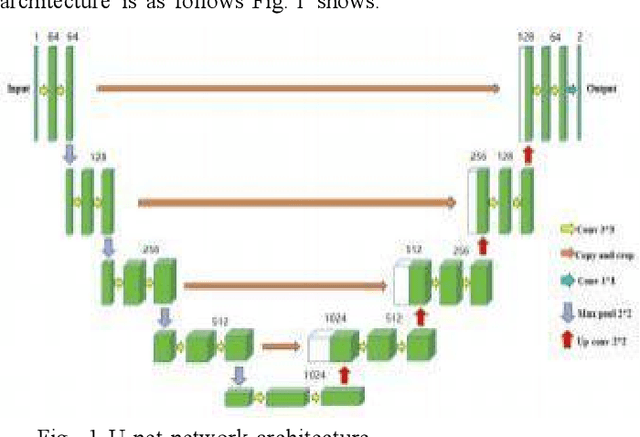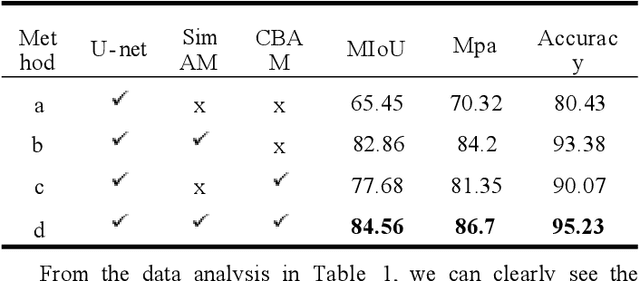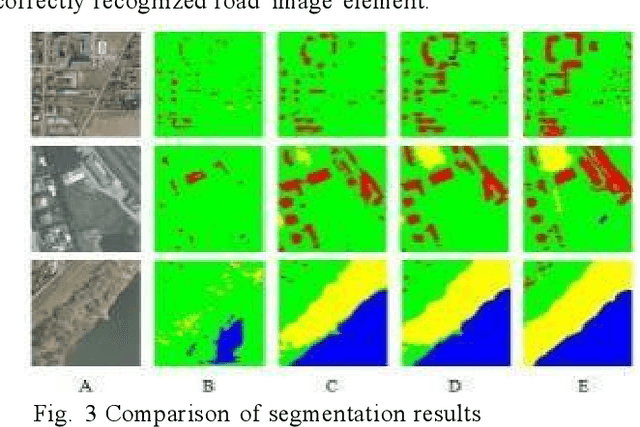Zixin Wang
Mutual Information-Empowered Task-Oriented Communication: Principles, Applications and Challenges
Mar 26, 2025Abstract:Mutual information (MI)-based guidelines have recently proven to be effective for designing task-oriented communication systems, where the ultimate goal is to extract and transmit task-relevant information for downstream task. This paper provides a comprehensive overview of MI-empowered task-oriented communication, highlighting how MI-based methods can serve as a unifying design framework in various task-oriented communication scenarios. We begin with the roadmap of MI for designing task-oriented communication systems, and then introduce the roles and applications of MI to guide feature encoding, transmission optimization, and efficient training with two case studies. We further elaborate the limitations and challenges of MI-based methods. Finally, we identify several open issues in MI-based task-oriented communication to inspire future research.
Federated Low-Rank Adaptation with Differential Privacy over Wireless Networks
Nov 12, 2024Abstract:Fine-tuning large pre-trained foundation models (FMs) on distributed edge devices presents considerable computational and privacy challenges. Federated fine-tuning (FedFT) mitigates some privacy issues by facilitating collaborative model training without the need to share raw data. To lessen the computational burden on resource-limited devices, combining low-rank adaptation (LoRA) with federated learning enables parameter-efficient fine-tuning. Additionally, the split FedFT architecture partitions an FM between edge devices and a central server, reducing the necessity for complete model deployment on individual devices. However, the risk of privacy eavesdropping attacks in FedFT remains a concern, particularly in sensitive areas such as healthcare and finance. In this paper, we propose a split FedFT framework with differential privacy (DP) over wireless networks, where the inherent wireless channel noise in the uplink transmission is utilized to achieve DP guarantees without adding an extra artificial noise. We shall investigate the impact of the wireless noise on convergence performance of the proposed framework. We will also show that by updating only one of the low-rank matrices in the split FedFT with DP, the proposed method can mitigate the noise amplification effect. Simulation results will demonstrate that the proposed framework achieves higher accuracy under strict privacy budgets compared to baseline methods.
Tokens on Demand: Token Condensation as Training-free Test-time Adaptation
Oct 16, 2024Abstract:In this work, we introduce Token Condensation as Adaptation (TCA), a training-free approach designed to mitigate distribution shifts encountered by vision-language models (VLMs) during test-time inference. TCA bridges distribution gaps at the patch level by condensing image tokens that exhibit low attentiveness to the <cls> token. Recognizing the <cls> token may correspond to universal concepts, TCA identifies and tracks the most reliable <cls> tokens that align specifically with target classes from historical data streams. To achieve this, we propose a context token reservoir (CTR), which retains tokens with the lowest uncertainty as ``anchors" to guide the preservation of class-relevant tokens during inference. These anchors, in turn, act as token-level classifiers to correct VLM predictions and improve visual-text alignment. Utilizing anchors sampled from CTR, TCA condenses tokens through two operations: (1) pruning class-irrelevant tokens that consistently rank low across all attention heads to reach cross-head consensus on their irrelevance, and (2) merging the remaining class-ambiguous tokens into representative centers using coreset selection, maintaining linear computational complexity. As the first method to explore token efficiency in test-time adaptation, TCA consistently demonstrates superior performance across cross-dataset and out-of-distribution adaptation tasks, reducing GFLOPs by 12.2% to 48.9% while achieving accuracy improvements up to 21.4% against the strongest baseline without introducing additional parameters.
Research on Improved U-net Based Remote Sensing Image Segmentation Algorithm
Aug 22, 2024



Abstract:In recent years, although U-Net network has made significant progress in the field of image segmentation, it still faces performance bottlenecks in remote sensing image segmentation. In this paper, we innovatively propose to introduce SimAM and CBAM attention mechanism in U-Net, and the experimental results show that after adding SimAM and CBAM modules alone, the model improves 17.41% and 12.23% in MIoU, and the Mpa and Accuracy are also significantly improved. And after fusing the two,the model performance jumps up to 19.11% in MIoU, and the Mpa and Accuracy are also improved by 16.38% and 14.8% respectively, showing excellent segmentation accuracy and visual effect with strong generalization ability and robustness. This study opens up a new path for remote sensing image segmentation technology and has important reference value for algorithm selection and improvement.
DNA-SE: Towards Deep Neural-Nets Assisted Semiparametric Estimation
Aug 04, 2024Abstract:Semiparametric statistics play a pivotal role in a wide range of domains, including but not limited to missing data, causal inference, and transfer learning, to name a few. In many settings, semiparametric theory leads to (nearly) statistically optimal procedures that yet involve numerically solving Fredholm integral equations of the second kind. Traditional numerical methods, such as polynomial or spline approximations, are difficult to scale to multi-dimensional problems. Alternatively, statisticians may choose to approximate the original integral equations by ones with closed-form solutions, resulting in computationally more efficient, but statistically suboptimal or even incorrect procedures. To bridge this gap, we propose a novel framework by formulating the semiparametric estimation problem as a bi-level optimization problem; and then we develop a scalable algorithm called Deep Neural-Nets Assisted Semiparametric Estimation (DNA-SE) by leveraging the universal approximation property of Deep Neural-Nets (DNN) to streamline semiparametric procedures. Through extensive numerical experiments and a real data analysis, we demonstrate the numerical and statistical advantages of $\dnase$ over traditional methods. To the best of our knowledge, we are the first to bring DNN into semiparametric statistics as a numerical solver of integral equations in our proposed general framework.
DPO: Dual-Perturbation Optimization for Test-time Adaptation in 3D Object Detection
Jun 19, 2024Abstract:LiDAR-based 3D object detection has seen impressive advances in recent times. However, deploying trained 3D detectors in the real world often yields unsatisfactory performance when the distribution of the test data significantly deviates from the training data due to different weather conditions, object sizes, \textit{etc}. A key factor in this performance degradation is the diminished generalizability of pre-trained models, which creates a sharp loss landscape during training. Such sharpness, when encountered during testing, can precipitate significant performance declines, even with minor data variations. To address the aforementioned challenges, we propose \textbf{dual-perturbation optimization (DPO)} for \textbf{\underline{T}est-\underline{t}ime \underline{A}daptation in \underline{3}D \underline{O}bject \underline{D}etection (TTA-3OD)}. We minimize the sharpness to cultivate a flat loss landscape to ensure model resiliency to minor data variations, thereby enhancing the generalization of the adaptation process. To fully capture the inherent variability of the test point clouds, we further introduce adversarial perturbation to the input BEV features to better simulate the noisy test environment. As the dual perturbation strategy relies on trustworthy supervision signals, we utilize a reliable Hungarian matcher to filter out pseudo-labels sensitive to perturbations. Additionally, we introduce early Hungarian cutoff to avoid error accumulation from incorrect pseudo-labels by halting the adaptation process. Extensive experiments across three types of transfer tasks demonstrate that the proposed DPO significantly surpasses previous state-of-the-art approaches, specifically on Waymo $\rightarrow$ KITTI, outperforming the most competitive baseline by 57.72\% in $\text{AP}_\text{3D}$ and reaching 91\% of the fully supervised upper bound.
Machine Unlearning in Contrastive Learning
May 12, 2024Abstract:Machine unlearning is a complex process that necessitates the model to diminish the influence of the training data while keeping the loss of accuracy to a minimum. Despite the numerous studies on machine unlearning in recent years, the majority of them have primarily focused on supervised learning models, leaving research on contrastive learning models relatively underexplored. With the conviction that self-supervised learning harbors a promising potential, surpassing or rivaling that of supervised learning, we set out to investigate methods for machine unlearning centered around contrastive learning models. In this study, we introduce a novel gradient constraint-based approach for training the model to effectively achieve machine unlearning. Our method only necessitates a minimal number of training epochs and the identification of the data slated for unlearning. Remarkably, our approach demonstrates proficient performance not only on contrastive learning models but also on supervised learning models, showcasing its versatility and adaptability in various learning paradigms.
In Search of Lost Online Test-time Adaptation: A Survey
Oct 31, 2023Abstract:In this paper, we present a comprehensive survey on online test-time adaptation (OTTA), a paradigm focused on adapting machine learning models to novel data distributions upon batch arrival. Despite the proliferation of OTTA methods recently, the field is mired in issues like ambiguous settings, antiquated backbones, and inconsistent hyperparameter tuning, obfuscating the real challenges and making reproducibility elusive. For clarity and a rigorous comparison, we classify OTTA techniques into three primary categories and subject them to benchmarks using the potent Vision Transformer (ViT) backbone to discover genuinely effective strategies. Our benchmarks span not only conventional corrupted datasets such as CIFAR-10/100-C and ImageNet-C but also real-world shifts embodied in CIFAR-10.1 and CIFAR-10-Warehouse, encapsulating variations across search engines and synthesized data by diffusion models. To gauge efficiency in online scenarios, we introduce novel evaluation metrics, inclusive of FLOPs, shedding light on the trade-offs between adaptation accuracy and computational overhead. Our findings diverge from existing literature, indicating: (1) transformers exhibit heightened resilience to diverse domain shifts, (2) the efficacy of many OTTA methods hinges on ample batch sizes, and (3) stability in optimization and resistance to perturbations are critical during adaptation, especially when the batch size is 1. Motivated by these insights, we pointed out promising directions for future research. The source code will be made available.
Towards Open World Active Learning for 3D Object Detection
Oct 16, 2023Abstract:Significant strides have been made in closed world 3D object detection, testing systems in environments with known classes. However, the challenge arises in open world scenarios where new object classes appear. Existing efforts sequentially learn novel classes from streams of labeled data at a significant annotation cost, impeding efficient deployment to the wild. To seek effective solutions, we investigate a more practical yet challenging research task: Open World Active Learning for 3D Object Detection (OWAL-3D), aiming at selecting a small number of 3D boxes to annotate while maximizing detection performance on both known and unknown classes. The core difficulty centers on striking a balance between mining more unknown instances and minimizing the labeling expenses of point clouds. Empirically, our study finds the harmonious and inverse relationship between box quantities and their confidences can help alleviate the dilemma, avoiding the repeated selection of common known instances and focusing on uncertain objects that are potentially unknown. We unify both relational constraints into a simple and effective AL strategy namely OpenCRB, which guides to acquisition of informative point clouds with the least amount of boxes to label. Furthermore, we develop a comprehensive codebase for easy reproducing and future research, supporting 15 baseline methods (i.e., active learning, out-of-distribution detection and open world detection), 2 types of modern 3D detectors (i.e., one-stage SECOND and two-stage PV-RCNN) and 3 benchmark 3D datasets (i.e., KITTI, nuScenes and Waymo). Extensive experiments evidence that the proposed Open-CRB demonstrates superiority and flexibility in recognizing both novel and shared categories with very limited labeling costs, compared to state-of-the-art baselines.
Cal-SFDA: Source-Free Domain-adaptive Semantic Segmentation with Differentiable Expected Calibration Error
Aug 06, 2023Abstract:The prevalence of domain adaptive semantic segmentation has prompted concerns regarding source domain data leakage, where private information from the source domain could inadvertently be exposed in the target domain. To circumvent the requirement for source data, source-free domain adaptation has emerged as a viable solution that leverages self-training methods to pseudo-label high-confidence regions and adapt the model to the target data. However, the confidence scores obtained are often highly biased due to over-confidence and class-imbalance issues, which render both model selection and optimization problematic. In this paper, we propose a novel calibration-guided source-free domain adaptive semantic segmentation (Cal-SFDA) framework. The core idea is to estimate the expected calibration error (ECE) from the segmentation predictions, serving as a strong indicator of the model's generalization capability to the unlabeled target domain. The estimated ECE scores, in turn, assist the model training and fair selection in both source training and target adaptation stages. During model pre-training on the source domain, we ensure the differentiability of the ECE objective by leveraging the LogSumExp trick and using ECE scores to select the best source checkpoints for adaptation. To enable ECE estimation on the target domain without requiring labels, we train a value net for ECE estimation and apply statistic warm-up on its BatchNorm layers for stability. The estimated ECE scores assist in determining the reliability of prediction and enable class-balanced pseudo-labeling by positively guiding the adaptation progress and inhibiting potential error accumulation. Extensive experiments on two widely-used synthetic-to-real transfer tasks show that the proposed approach surpasses previous state-of-the-art by up to 5.25% of mIoU with fair model selection criteria.
 Add to Chrome
Add to Chrome Add to Firefox
Add to Firefox Add to Edge
Add to Edge